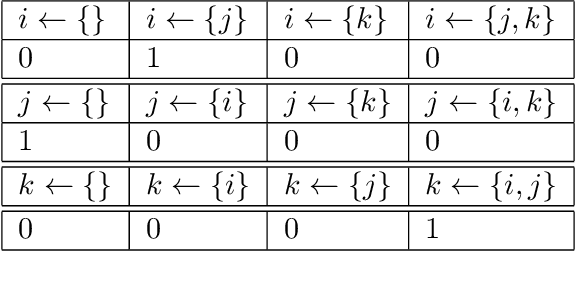Mark Bartlett
Bayesian Network Structure Learning with Integer Programming: Polytopes, Facets, and Complexity
Dec 18, 2016



Abstract:The challenging task of learning structures of probabilistic graphical models is an important problem within modern AI research. Recent years have witnessed several major algorithmic advances in structure learning for Bayesian networks---arguably the most central class of graphical models---especially in what is known as the score-based setting. A successful generic approach to optimal Bayesian network structure learning (BNSL), based on integer programming (IP), is implemented in the GOBNILP system. Despite the recent algorithmic advances, current understanding of foundational aspects underlying the IP based approach to BNSL is still somewhat lacking. Understanding fundamental aspects of cutting planes and the related separation problem( is important not only from a purely theoretical perspective, but also since it holds out the promise of further improving the efficiency of state-of-the-art approaches to solving BNSL exactly. In this paper, we make several theoretical contributions towards these goals: (i) we study the computational complexity of the separation problem, proving that the problem is NP-hard; (ii) we formalise and analyse the relationship between three key polytopes underlying the IP-based approach to BNSL; (iii) we study the facets of the three polytopes both from the theoretical and practical perspective, providing, via exhaustive computation, a complete enumeration of facets for low-dimensional family-variable polytopes; and, furthermore, (iv) we establish a tight connection of the BNSL problem to the acyclic subgraph problem.
Advances in Bayesian Network Learning using Integer Programming
Mar 23, 2015Abstract:We consider the problem of learning Bayesian networks (BNs) from complete discrete data. This problem of discrete optimisation is formulated as an integer program (IP). We describe the various steps we have taken to allow efficient solving of this IP. These are (i) efficient search for cutting planes, (ii) a fast greedy algorithm to find high-scoring (perhaps not optimal) BNs and (iii) tightening the linear relaxation of the IP. After relating this BN learning problem to set covering and the multidimensional 0-1 knapsack problem, we present our empirical results. These show improvements, sometimes dramatic, over earlier results.
 Add to Chrome
Add to Chrome Add to Firefox
Add to Firefox Add to Edge
Add to Edge